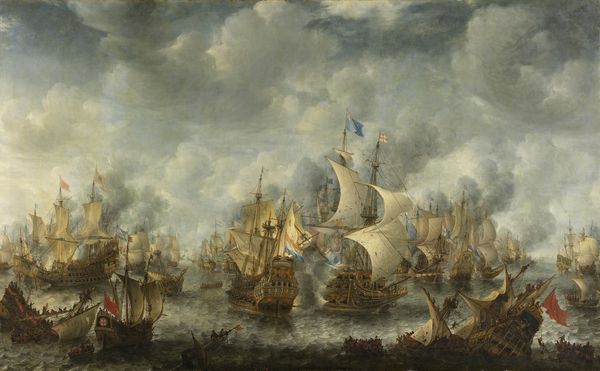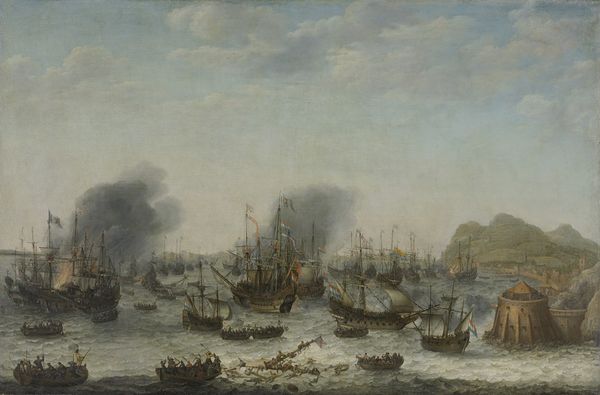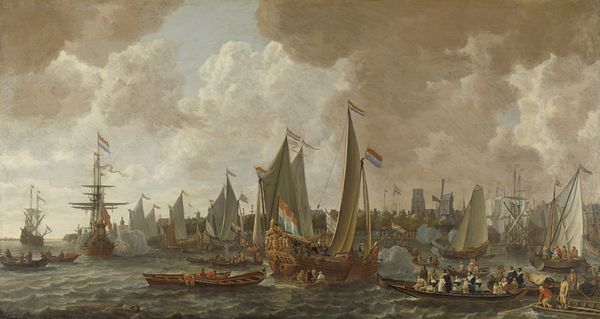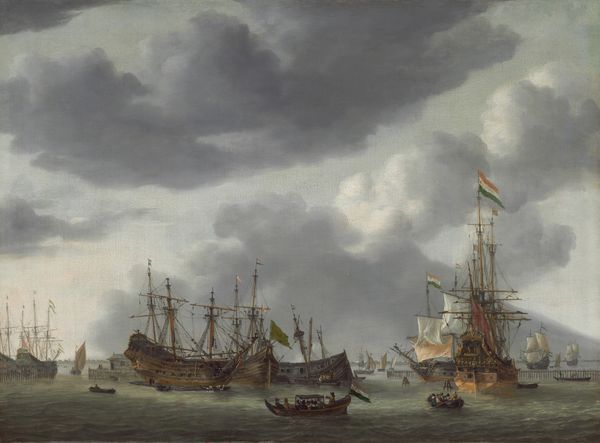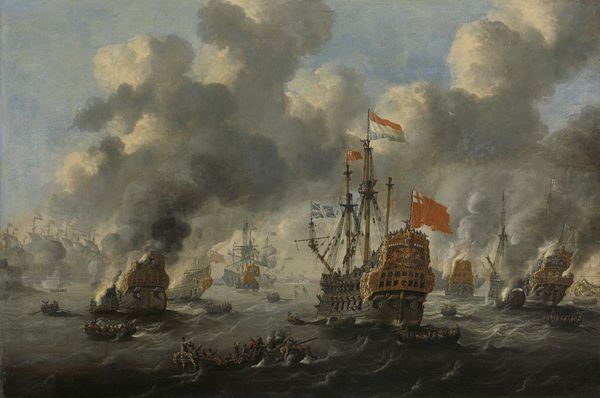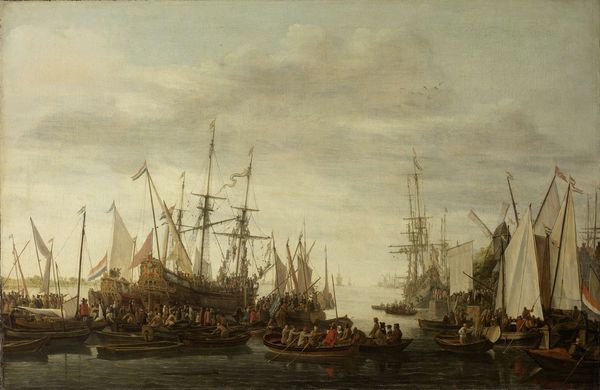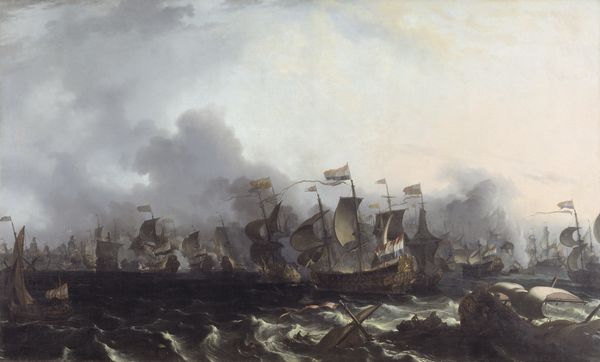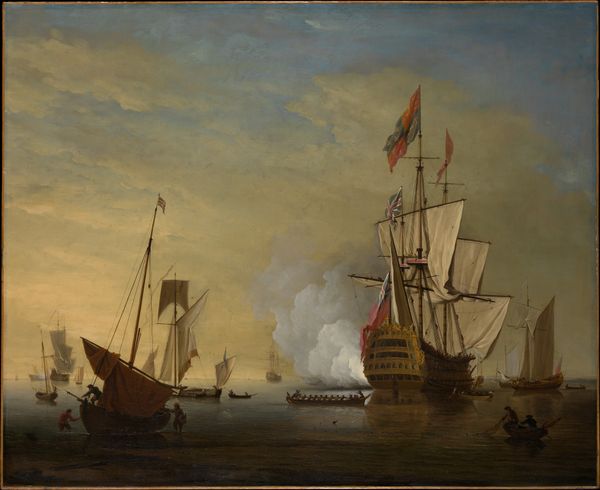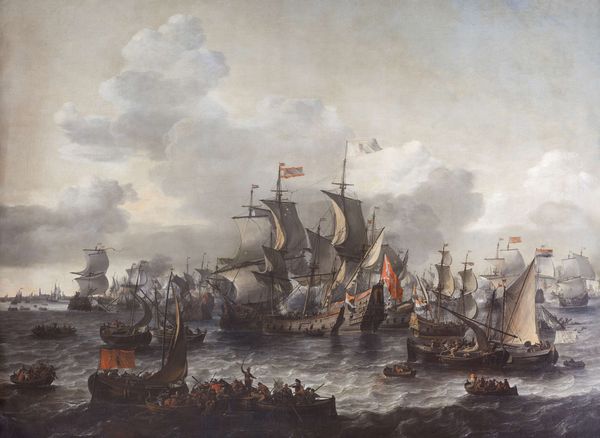
The Battle of the Sound with the Eendracht Engaging Two Swedish Warships, 1658 c. 1670
0:00
0:00
painting, oil-paint
#
baroque
#
painting
#
oil-paint
#
landscape
#
oil painting
#
genre-painting
#
history-painting
Dimensions: support height 70.4 cm, support width 107.5 cm
Copyright: Rijks Museum: Open Domain
Curator: This oil painting, estimated to be from around 1670, depicts "The Battle of the Sound with the Eendracht Engaging Two Swedish Warships, 1658." Editor: Wow, that’s a mouthful! My first impression is that the painter really captured the chaos. It's such a turbulent scene; all I see are cannons, sails, and a sky heavy with smoke. It’s pretty captivating. Curator: Absolutely. Let’s consider the circumstances of production. Seventeenth-century Dutch maritime painting often functioned as a potent tool of national self-representation, intended for consumption by a growing merchant class keen on commemorating Dutch power and commerce. Oil paints and canvases at the time represented significant expense in labor and raw materials. Editor: This naval battle takes place in 1658 between the Dutch and the Swedish forces; looking closer, those billowing sails are symbols of both national pride and intense political tensions of that era. The battle itself reflects broader themes of economic dominance and geopolitical wrestling for control over trade routes and resources. This isn't just a depiction of naval tactics, it's a story about the rise and maintenance of power. Curator: I agree. The medium here is vital. Oil allows for meticulous layering and blending. Observe the complex gradations in the clouds or the details of the ship’s riggings, all of which required considerable labor by workshop assistants and the artist. Oil paints allowed for a depiction of space and depth impossible for other kinds of mediums available. Editor: It strikes me that by capturing this specific naval conflict, the artist is shaping a specific narrative – and perhaps, reinforcing certain assumptions around colonial might at a time where there were changing definitions and debates around what constitutes legitimate forms of governance or international engagement. How much does the painter give an unbiased snapshot versus propagating the image of invincibility? Curator: A valid point, given art production relied upon economic networks to supply pigments, brushes and other tools; access shaped output, which shaped perceptions among potential patrons viewing it after the fact. It is interesting to think about these production realities today. Editor: Exactly, these pieces also are visual claims—declarations about identity and who gets to control the story of a nation! These ships are practically bristling with political implications. Curator: Precisely. Appreciating those layers enriches our perspective beyond aesthetics. Editor: Completely shifts the perspective from a pretty painting to something so much deeper.
Comments
No comments
Be the first to comment and join the conversation on the ultimate creative platform.
